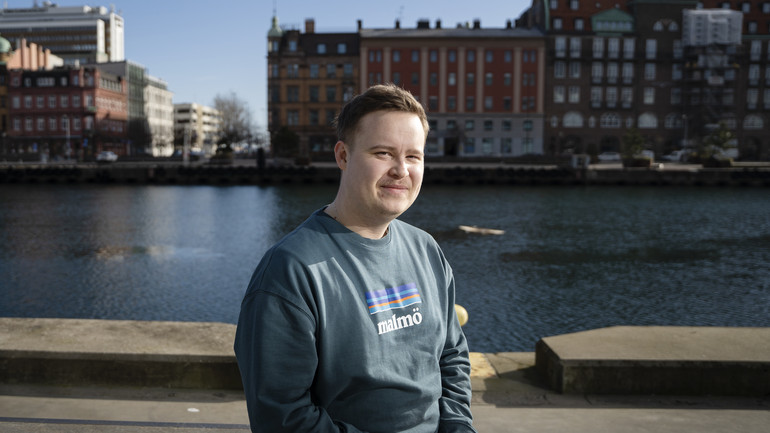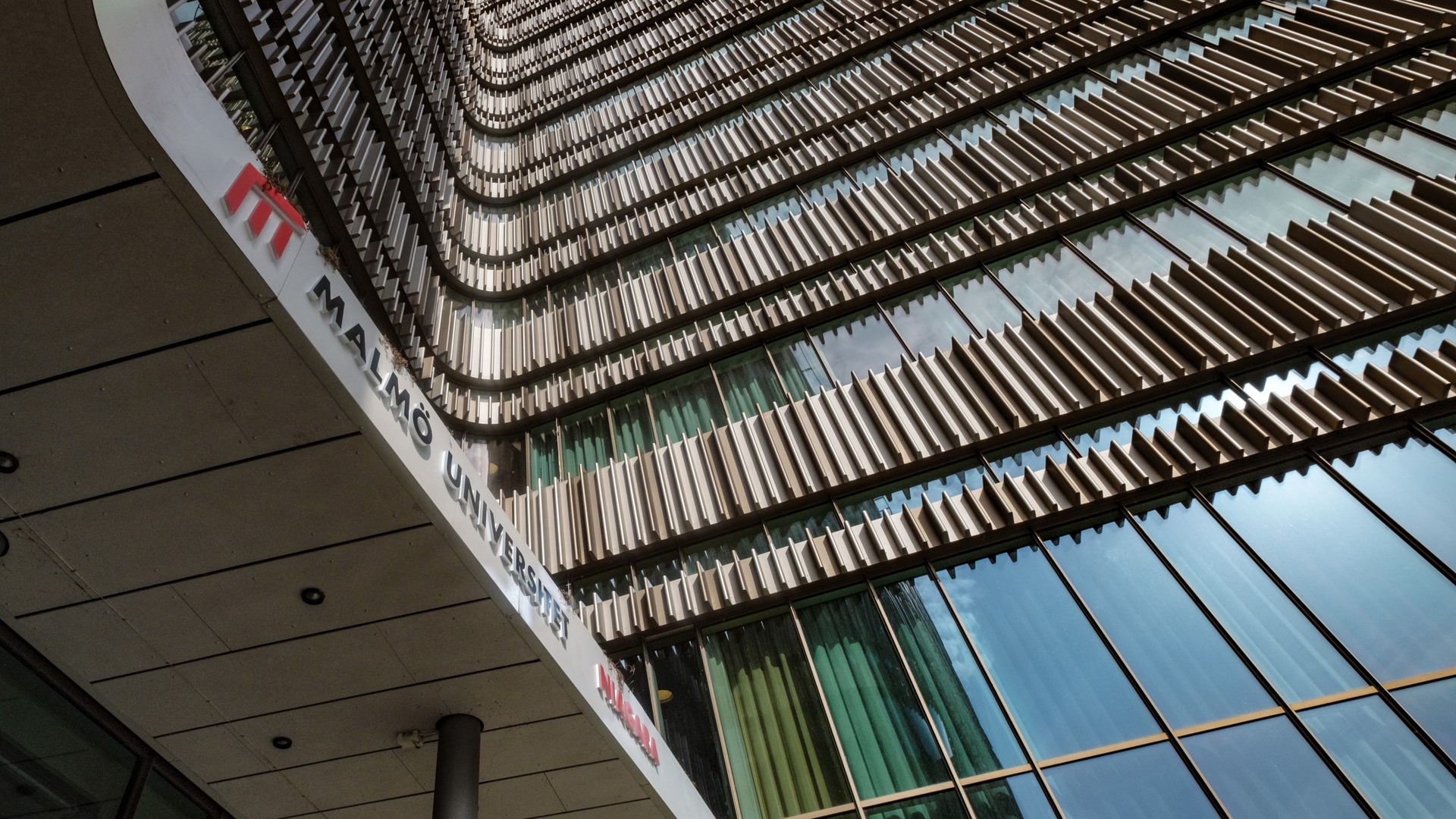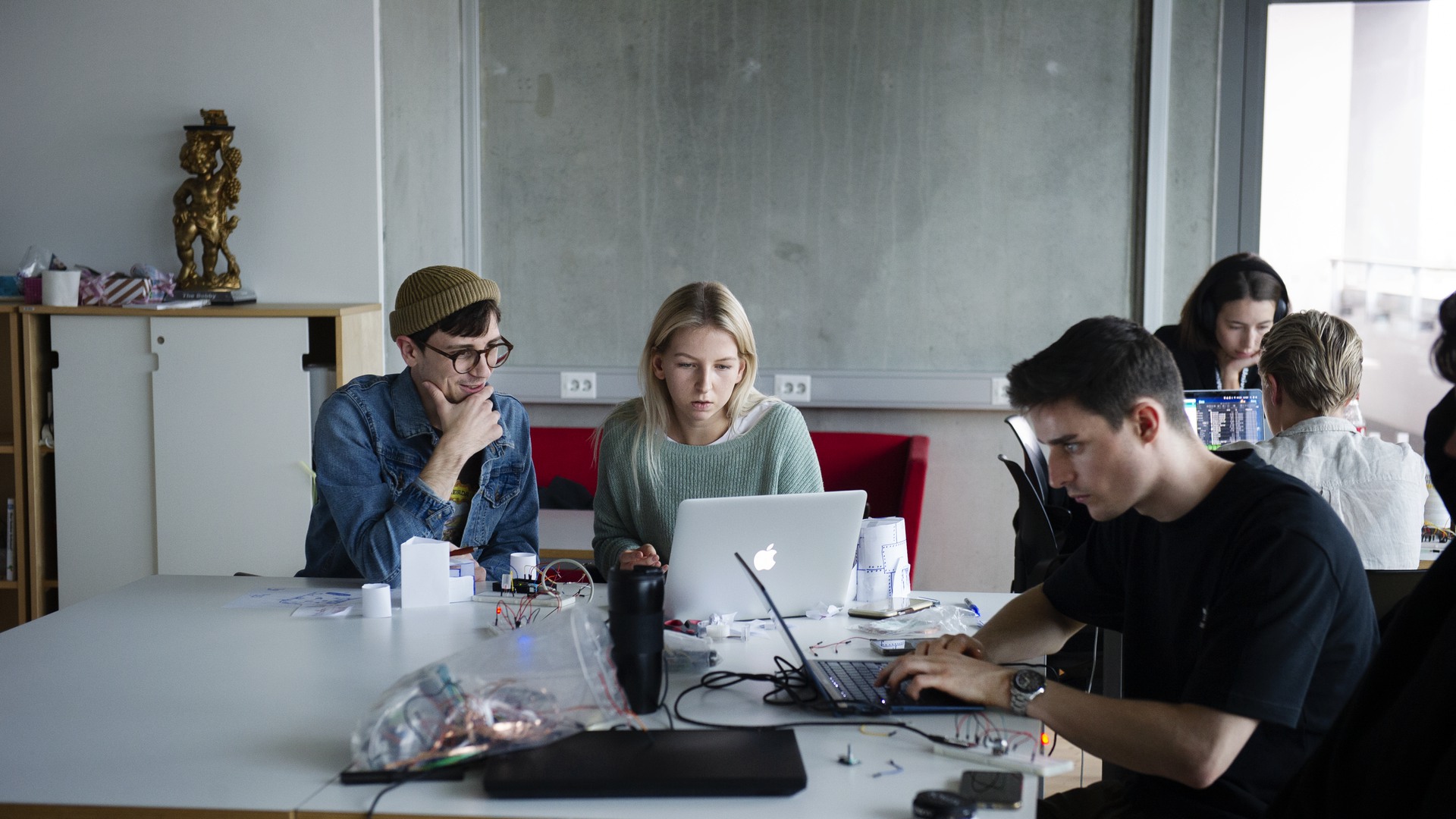As an Interaction designer I can apply my skills to any industry that involves people and technology
Max Angenius worked in the design industry for a few years before he decided to study design at a master's level. He chose Interaction Design at Malmö University because of its humanistic approach to interaction design. What he didn't expect was to develop an interest in building things with electronics and programming, which he says the programme opened the door for.
A humanistic and technologic approach
– Before studying the Interaction Design Master's programme at Malmö University, I completed a Bachelor's in digital design and worked for a few years as an Interaction designer. I worked very broadly with design back then, helping health technology start-ups and the public sector to develop the future of healthcare through technology. After a few years in the design industry, I was hungry for new knowledge and was at a point in my career where it was time for a change. Deepening my fundamentals in design through a master’s degree seemed like an appropriate step in my life.
While looking around for master’s programmes in Sweden, I got the impression that Interaction Design at Malmö University had a humanistic approach to interaction design, which suited my interest at the time. I was, and still am, interested in how interaction design as a subject explores the intersection between people, society, and technology. The programme does have a humanistic approach, but it also introduces programming and electronics to students of every skill level.
During my studies, I went from avoiding programming and electronics to enjoying and pursuing them in my design projects. Over the two years, I have worked with diverse challenges with elevators, fencing, future theatre, and more. I've learned to create prototypes using microcontrollers and code, conduct codesigns workshops, and approach artificial intelligence from a design point of view.
Your chance to shine as a designer
– During the programme you learn the theoretical pillars of design: design process, embodiment, participatory design, play, design research, social innovation, and more. Almost all the courses let you practically apply these theories in projects. You also learn to work in teams with people from different backgrounds, cultures, and skills. That's an equally valuable skill to have when you are a designer.
My favourite courses were the thesis projects. The thesis projects are a chance for you to shine as a designer and deep dive into subjects that interest you. In addition to that, I enjoyed the Playful and Ludic Interaction course. Exploring playful interaction was intriguing and fun because it was not something I had done much of before in my career.
A solid ground to stand upon
– I think master studies add another layer of fundamental design knowledge. Studying a design master gives you the tools to approach almost any design problem. University studies provide you with solid ground to stand upon as a designer. This master’s programme allows you to be an interaction design generalist with the opportunity to specialize in your interest.
I'm also interested in doing a PhD in the future, which is another reason I chose to study at a master’s level. I can see myself as a teacher at a university or in the design industry. I have been working as a teaching assistant for the past year at the University, which made me more interested in a teaching role in my design career.
Solving problems and teach in the future
– After graduation, I want to work in the design industry again and contribute to solving problems for human beings, society, and the planet. I'm looking forward to working with different stakeholders in different contexts. Previously I worked with health technology and health care. Now I hope to contribute to industries such as music, gaming, education, and more. I enjoy being an Interaction designer because I can apply my skills to any industry that involves people and technology. I also hope that teaching will be a part of my future career.










